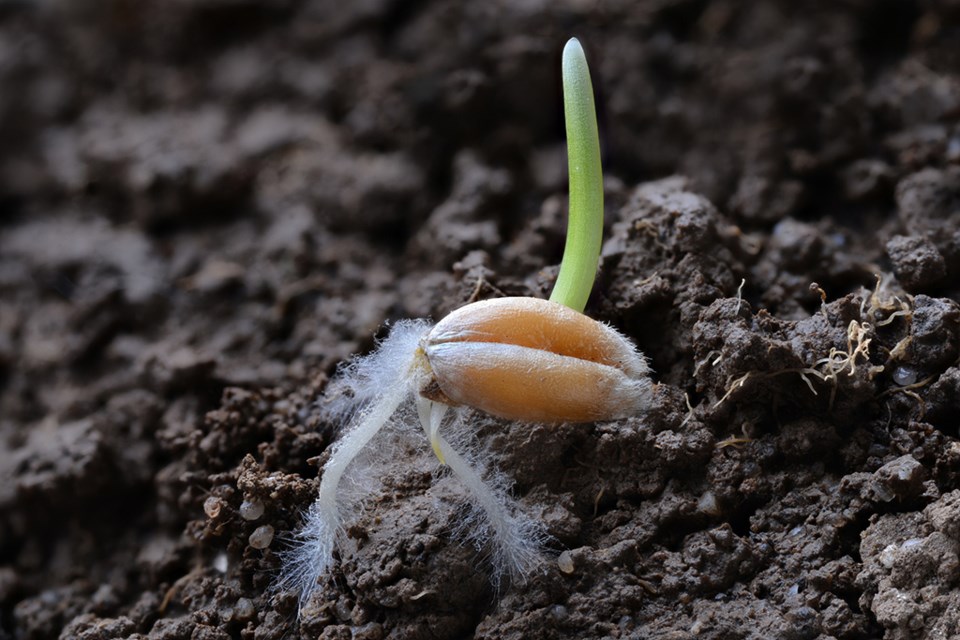EAST-CENTRAL SASKATCHEWAN — Wet conditions have further delayed seeding in the East-Central Saskatchewan Crop Region.
Some producers have just started their after waiting weeks for their fields to dry up and for the rain to stop. Seeding is at 50 per cent complete, which is well behind the five-year average (2017-2021) for this time of year of 89 per cent. Most of the progress in the region is in west half where less rain has been received over the past few weeks.
Within the east-central region, 83 per cent of the lentil acres, 81 per cent of field peas, 79 per cent of the durum, 51 per cent spring wheat, 48 per cent of barley, 43 per cent of canola, 36 per cent of flax and 31 per cent of oats have been seeded to date.
The Insinger and Esterhazy areas received more than 40 mm of rain over the past week, preventing many producers from continuing their field work. The Melville area received the next highest amount with 32 mm, the Foam Lake area 30 mm and the Earl Grey area 10 mm. While the rain is helping the soils and grass across the region recover from last years drought it would be appreciated by producers if the rain would halt so they could finish up their seeding operations quickly.
Earlier seeded crops are emerging slowly, and their growth has been delayed due to cool temperatures and excessive moisture. Cropland topsoil moisture is rated as 35 per cent surplus, 63 per cent adequate, two per cent short. Hay and pasture land topsoil moisture is rated as 20 per cent surplus, 71 per cent adequate, five per cent short and four per cent very short. The majority of the crops are in good to fair condition. Most of the crop damage this week is due to flooding, wind and flea beetles.
Provincial Overview
Producers in the west are nearly wrapped up with seeding while many in the east are still behind due to rain delays and extremely wet fields.
Currently, 76 per cent of the crop acres in the province have been seeded, up from 52 per cent last week but still well behind the five-year average (2017-2021) of 93 per cent. Producers in the southeast and east central regions have reported that many low laying areas will go unseeded this year due to standing water.
Ninety-seven per cent of the crop is seeded in the southwest, 95 per cent in the west-central, 93 per cent in the northwest, 64 per cent per cent in the southeast, 60 per cent in the northeast and 50 per cent in the east-central region.
Provincially, 96 per cent of lentils and chickpeas, 93 per cent of field peas, 91 per cent of durum, 79 per cent of canary seed, 75 per cent of spring wheat, 69 per cent of barley, 66 per cent of canola, 65 per cent of flax and 51 per cent of oats have been seeded to date.
A large weather system covered much of the eastern part of the province this past week, resulting in significant amounts of rain for those regions. The Moosomin area received 92 mm, the Stoughton area 89 mm, the Bienfait area 65 mm and the Esterhazy area 42 mm. The west received some rain over the past week, but amounts were small, ranging from three mm to 12 mm.
Cropland topsoil moisture is rated as 16 per cent surplus, 56 per cent adequate, 19 per cent short and nine per cent very short. Hay and pasture land topsoil moisture is rated as seven per cent surplus, 60 per cent adequate, 19 per cent short and 14 per cent very short. Western regions are least favourable for moisture while more favourable conditions are reported in the east.
Crop conditions this week range from good to fair across the province. Emergence has been reported to be slow in areas of the southwest and west-central where moisture is lacking. In the southeast and east-central, however, emergence has been slow due to cool weather and an overabundance of moisture. Most crop damage this week was from flooding, drought, flea beetles and gophers.
Now that seeding has wrapped up for many producers, they are busying spraying in-crop herbicides, assessing germination and emergence, scouting for early season pests and moving cattle to pasture.




